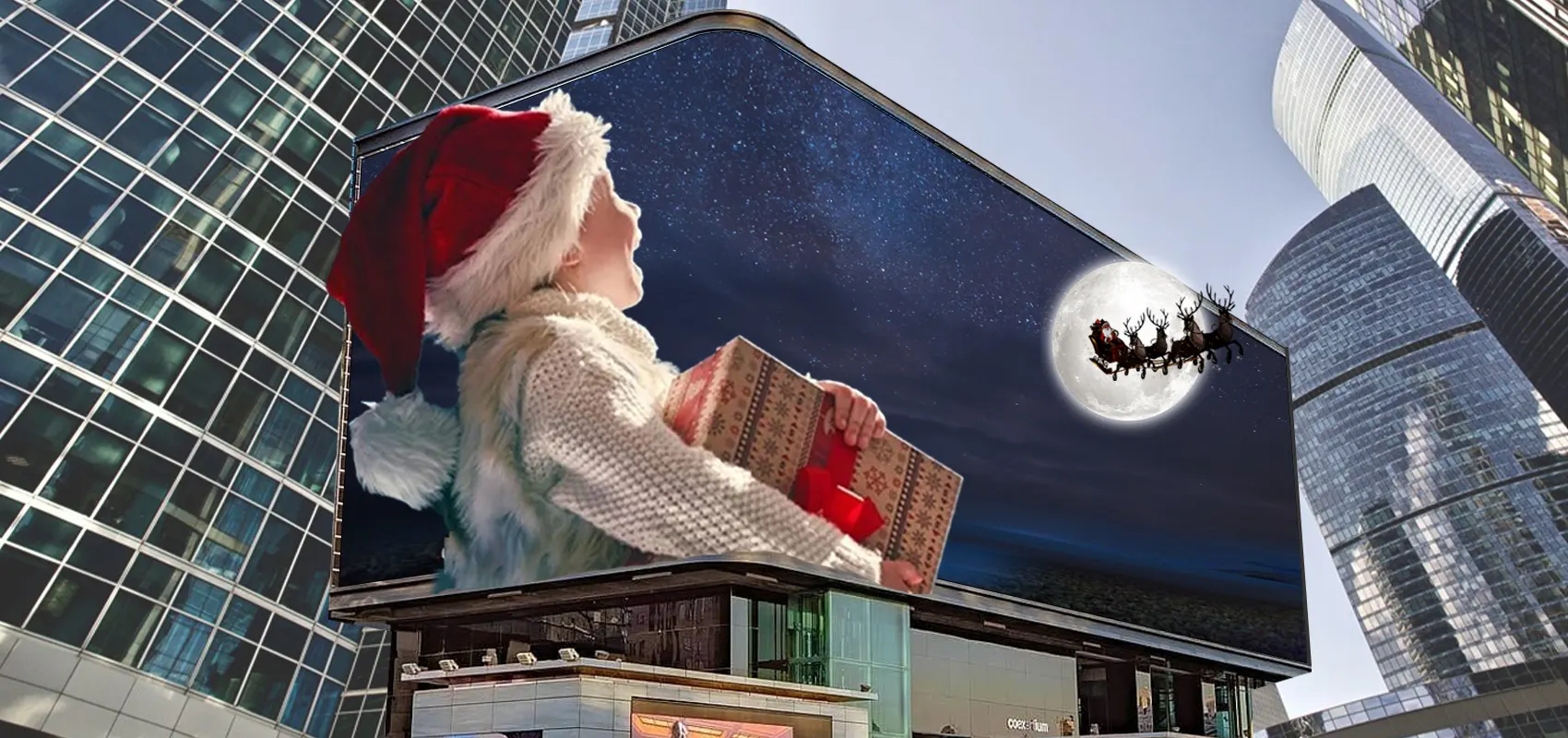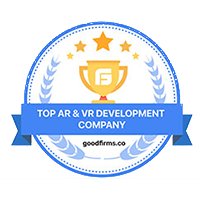What are 3D Billboards?
3D Billboards or 3D Anamorphic Billboards are a type of Digital-Out-Of-Home or DOOH Advertising i.e. outdoor and offline advertising channels that employ digital technology. There are many types of DOOH like Digital Billboards, Digital Screens, Mobile Screens, etc. However, 3D Billboards outshine not only DOOH but all other forms of advertising channels.
This is because 3D billboards offer three-dimensional visuals with ultrarealistic content. Such an experience instantly hooks passersby leading to higher engagement.
They offer a perfect blend of entertainment, technology, and marketing catching the imaginations of consumers and businesses alike. Hence, they can easily be considered the most impactful outdoor advertising channel in the current times.
Google's 3D billboard in Times Square is IMMENSE 🔥👇https://t.co/nmVqNdnki8 pic.twitter.com/HOsXmj2ePR
— Matt Navarra (@MattNavarra) December 12, 2022
As we saw above, 3D Billboard advertising is a subset of DOOH advertising, which, in turn, is a subset of Out-of-Home or OOH advertising. Therefore, to understand and appreciate the full capabilities of 3D Billboards we first need to understand what are DOOH and OOH.
Digital-Out-Of-Home Advertising
DOOH is a form of outdoor advertising that conveys promotional messages to customers in digital format. These digital billboards run multimedia ads and are strategically positioned to attract a wide audience.
DOOH advertisements have evolved over the years to become programmatic i.e. the use of automated technology for buying advertising space, as opposed to traditional (often manual) advertising methods.
Combining this with technologies such as geofencing and beacons, vendors have made it possible to track, target, retarget, personalize, attribute and measure ad campaign performance. This makes them an impactful and profitable marketing strategy.
3D Anamorphic Billboards takes advantage of DOOH even further as we will see in the next section. DOOH comes under the larger umbrella of OOH advertising.
Out-of-Home or OOH Advertising
Out-of-home (OOH) is one of the oldest forms of advertising, also known as out-of-home media or outdoor media. Basically, any advertisement done in an outdoor public setting comes under OOH.
Its origin goes back to the late 18th century with the invention of the Lithograph, the duplicator machine to replicate thousands of copies of the same prints. Since then, the OOH formats have expanded from small posters to big 24-sheet billboards. At the same time, the placement evolved from freely available city walls to leased-out public spaces.
Some of its typical examples include traditional non-digital billboards, on-car ads, bus-stop shelters advertising, airport advertisements, shopping center displays, cinemas, and digital place-based screens.
How do 3D Digital Billboards work?
The fact that 3D billboards have been so successful is that users can see the 3D visual content through their bare eyes, no need for 3D glasses or any special device, just pure, natural immersion into a new experience.
To do the trick, 3D billboards lean on our brain’s way of processing visual stimulation, especially depth perception. This helps 3D billboards project 3D visuals directly into the brains of viewers without the intermediation of 3D glasses. So, how does our brain process visuals, and how do 3D Billboards capitalize on them?
Read on.
First, how do humans see 3D World?
The human brain is the greatest visual processing machine. It receives information on the outside from each eye, or say Binocular cues, and processes them to construct our three-dimensional interpretation of the world. An interesting fact, visual information comprises only 20% of the binocular cues, the rest is composed of other information sources like eye convergence, disparity, etc.
Technically, there are three binocular cues i.e. Stereopsis, Convergence, and Shadow stereopsis. Stereopsis is the major component of our depth perception and 3D billboards make the most out of it. What is Stereopsis?
Stereopsis is the perception of depth developed by our brain using the two different images captured from each of our eyes. This is because our eyes are 6.3 cm apart on average and each of them receives visuals from a different angle. This difference in the two images is called Binocular disparity or Horizontal disparity.
The visual cortex is the area of the brain that seamlessly fuses these two different images into a single one. This helps us perceive the depth, width, length, and distance between objects. Now let’s see how 3D anamorphic billboards use these phenomena to project 3D visuals that are visible naturally to the onlooker.
How do 3D billboards offer natural 3D views?
3D Anamorphic Billboards use stereopsis to create a perception of depth in the viewer’s mind resulting in 3D visuals. They project two images of the same object taken from two different angles corresponding to the distance between the spectator’s eyes. These images are displayed on specially curved screens for each eye to get a different image as you can see in the image.
However, the work doesn’t end there. In fact, the most important component of the three-dimensional experience is the content. It works in two layers. First, the hyper-realistic larger-than-life visual content just mesmerizes the viewer. Second, and more importantly, it reinforces the 3D immersive experience through the technique of ‘Forced perspective’.

Forced Perspective
Forced Perspective is a technique to influence human visual perception by creating an optical illusion. In this, the size of the objects in the visuals is manipulated corresponding to the viewpoint of the passersby. This way the creator can force our brain to perceive the depth and distance of an object.
One popular example of the forced perspective technique is the old movie scenes where creators put a toy dinosaur closer to the camera and actors stand a distance. With the proper use of camera angles and lighting, this setup makes the toy dinosaur appear much larger than the actors. 3D billboards use this technique along with the curved screen to add the third dimension of depth to the visuals.
This results in captivating visual content that passersby would stop to watch, make a video to share on social media, and remember for a long time. That is why 3D billboards are one of the best ways to promote your business. The next section discusses the advantages the 3D billboard advertising to businesses.
Advantages: What makes 3D Billboards great for Advertising?
3D billboards deliver unparalleled advertising opportunities for businesses. Not only do they help in reaching a valuable audience in mass but do it authoritatively. Businesses showcasing themselves through 3D billboards are considered prestigious by the consumer which greatly contributes to their brand perception leading to higher sales. Let’s see the advantages one by one.
Add a ‘WOW’ factor for campaign virality
As per a study by Nielsen, Out-Of-Home which includes DOOH 3D Billboards is the most effective offline medium when it comes to driving online activity with more than four times per ad dollar spent compared to Television, Radio, and Print.
Also, almost half of adults used the internet to know about the brand after seeing the out-of-home advertisement. Plus, around 4 in 10 either visited the Facebook profile of the business or posted the experience on Facebook. Likewise, 1 in 4 used Instagram and Twitter.
These facts were evident when multiple videos capturing the 3D billboards’ experience broke into social media discourse and went viral overnight.
It thrives on the fact, that when people experience something great that excites them and fill them with admiration, they develop an urges to share it with others.
Through ultrarealistic visuals and well-thought-out content, these billboards add the WOW factor to the campaign and make it effective to an exponential extent.
Produces impact naturally to impress viewers
The content on the 3D billboards is planned by taking the physical environment around the billboards into consideration. The creates keep the lighting, weather, and other environmental actors in mind along with the vantage point of the viewers. This brings the content closer to reality.
Moreover, users see the 3D content on the billboard without needing any special devices or even 3D glasses, this results in a highly convincing and emotionally evoking experience that instantly makes a connection between businesses and consumers.
Build Emotional Connection with audiences
Another major advantage of 3D billboards is the emotional connection. This is because 3D billboards allow businesses to place their brands in the same physical environment in which the consumer is.
The elements in the 3D visuals seem to be interacting with the same environment wherein the passerby is. For example, in one of the 3D billboards, a dreadful creature from the 3D video appeared to break out of the screen and gets lost in the world.
Through such innovative storytelling that merges the 3D content with the surrounding, businesses resonate in consumers’ minds and build a deeper emotional connection with them.
Distraction-free transmission of promotional messages
3D Billboards catch the attention of passersby at a time when they are not distracted by any other media. They are more attentive to visual stimulation and, thus, more receptive to the promotional message.
With smart and creative content planning, 3D billboards flawlessly blend entertainment with promotion. As a result, the onlookers get the best of both worlds and receive the inherent promotional message loud and clear.
Top 5 Examples of 3D Billboard Advertising
Sports Car Advertisement
Queppelin created a 3D advertisement of a sportscar using Blender (Cycles) and Render Farm. As needed, the advertisement was specially designed for a curved screen to create 3D visuals.
The animation was centered around one hero object and contained a complex product showcasing animations and simulations. Additionally, it involved a Realistic Suspension Rig for the car to replicate a life-like movement and simulations such as windshields, glasses, brakes, and light shafts.
The ad shows a sports car emerging from the flow with two robotic arms one on each side. One of the arms grabs a wheel and fixes it into its place. The car descends in a spiraling maneuver and accelerates forwards appearing to be coming out of the screen.
Then it recedes and takes a right turn to pass through an array of light arches that change its color to blue. Then, the car zoom in at full speed and reached its destination showroom. There, it joins other sports cars and takes its place.
The floor spins and the glass-made sliding gate starts closing. However, before the gate could close completely the car breaks through it shattering the glass particle to protrude from the screen.
This is a classic example of how content is the most important component when it comes to utilizing 3D billboards to their full potential.
The content not only offers 3D visuals but also shocks the viewer now and then by creating an illusion of a car bursting out of the screen onto the viewer.
People have never experienced anything like this and it makes the advertisement linger for longer periods in their minds.
Balenciaga & Fortnite
The Spanish luxury fashion house Balenciaga teamed up with Fortnite for a captivating 3D billboard ad campaign that ran across different countries.
The DOOH shows Fortnite’s favorite Doggo wearing fashion-wear from Balenciaga. The ad starts with Doggo reclining and looking at the people nearby. He, then, snaps his finger, and the name Balenciaga lights up on the ceiling. Then he stands up to reach the other side of the screen appearing to come out but suddenly he snaps the finger again and the ad ends with a black screen.
The ad campaigns were also developed on Unreal Engine and utilized the real-time ray tracing and lighting features that made Doggo appear as if he is truly in that location.
Shoe Advertisement on Billboard
One of the footwear advertisements created by Queppelin involved the 3D display of the shoe. The advertisement was developed on Blender (Cycles) and utilized Render Farm for CGI. It ran in Singapore and took a straightforward product showcase approach for its animation.
Centered around one hero object without involving complex characters or simulations, it showed an uncolored sneaker sliding across the display on a conveyer belt. Then, a robot hovers around the shoe projecting a special light beam that colors the shoe blue.
The robot leaves the scene and the shoe flies toward the viewers and rotates. Its color changes to red with colorful confetti bursting into the scene to end the video.
Amazon Prime
Amazon used 3D Billboard to promote Prime Video’s upcoming fantasy series – The Wheel of Time.
The advertisement shows Rosamund Pike, the lead actor, in a live-action 3D immersive visual. Where she appears and then disappears only for a hand to pass across the screen creating a wonderful 3D illusion.
After that, a ghost appears on the screen with a snake slithering from one side to the other side of the screen. The ad is to be displayed on New York Times Square and Cross Shinjuku Vision of Tokyo.
Sky Diver & Drone
Queppelin also created anamorphic 3D visuals for the 3D billboard on Blender(Cycles) and Render Farm. The content involved complex character animations with human rig and animation.
The visual shows a skydiver wearing futuristic gears emerging from a portal. It rolls in the air across the screen to reach the other end and hovers thereby opening its extremities just like a real skydiver does.
Then, we see several drones entering the scene with one of them flying toward the viewer for a wonderful 3D experience.
Get your Immersive 3D Ad Video now
Queppelin is one of the leading companies active in immersive technologies. With more than 12 years of experience in the field and a large team of experienced developers and designers, Queppelin is capable of creating highly impactful 3D advertising videos for your high-yielding campaigns.






